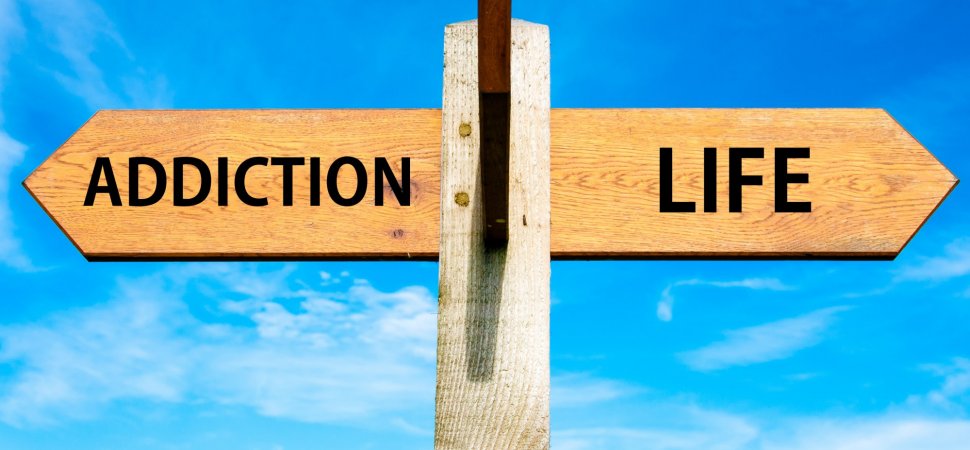By Jay Fullum, therapist on the Redpoint Center Team
Spending Time Outdoors
Fly fishing sober is a real gift. There are challenges of working in the addiction field, but I feel so blessed to have a career which allows me to integrate my passions. In addition, I love to expose the people I work with to fly fishing. It is a self-care tool they can use in their daily lives and recovery. Fly fishing sober brings great joy.
At The Redpoint Center, we provide outdoor-based skills to help our participants explore Colorado as an element of their recovery process. From personal experience, I know that spending time outside is necessary in all aspects of recovery and well-being. Furthermore, my story illustrates how fly fishing is an important part of recovery from my substance abuse and addiction. Hence, it could be part of your recovery, too.
Fly Fishing Sober: On the River Bank
Deep in a forested canyon, I stand on the Blue river, gazing out to the flowing waters and the shores of the river widened. On this bank, I feel grounded and connected to my recovered spirit. On this day, I can hear the power of the water, and see the calming riffles steady into a slow, spiraling eddy. Watching intently, my eyes catch flashes of rising trout, and emerging mayflies that were preparing to take flight from the water’s surface.
It is early June, and I just walked two miles down a steep trail, lined by red willows, pines, and bright orange algae-covered granite rocks. The birds sing a taunting song of laughter that only a humbled angler can really appreciate. The birds are the true fishermen of the canyon, but allow for the rarely skilled two-legged to impress.
Finding Connection
I opened my fly box and reached for a reliable dry fly pattern. As I gauge the distance to the feeding trout, I measure ten feet of leader to the eyelet of the rod, and pull out an extra fifteen feet of fly line. Finally, I begin taking cautious casts with my right hand, back and forth over my left shoulder.
Allowing the line to release organically, I drop the fly in the riffle between the fast moving water flowed into the eddy. There is a slow rise five feet to the right, a few moments pass, and then another two feet to the left. I recast. Then, I watch nervously for a moment, and suddenly feel the line go taught. In an instant, I am connected to the natural world in a way I can never quite predict. Hence, I am truly in the moment.
My Catch
The fish jumps powerfully out of the water. I see the brown, yellow, and red mosaic tattooed on the fish’s left side. It is a German brown trout. I allow the fish to make a run, and as soon as I feel him begin to slow, I reel the line in. He makes one more tremendous run, but I patiently pressure him back toward the slow water I am standing below. I approach cautiously, and as gracefully as I can, I slip my net under him. Next, I gently remove the fly from the fish’s lip which is considerably worn but intact. I immediately notice the fish’s radiant beauty.
I hold him up, and take a mental snap shot of the browns and reds painted perfectly across the body, matching the rocks and willows on the shoreline. Then, I gently move my thumb over a glossy blue spot tucked behind the eye of fish as I lower him back into the water. The fish and I share one last moment, as I rock it back and forth, moving water back into its gills. The fish builds strength and returns into the run.
Finding Joy on the River
While I sit down on the side of the river, I feel a wave of sun on my face. In addition, I notice my breath. I let go of a breath that I have been holding in for what feels like month. My attitude shifts to gratitude. I appreciate that just yesterday, I was a crustacean on a bar stool drinking my life away. By the river, I feel at home, full of pure, unadulterated joy. These moments of sober fly fishing on the river are what I chasied back in the day. In addition, the magic of time in nature is one I can always come back to, for free.

Saving Grace for My Recovery
Fly fishing sober has been a saving grace for my recovery in a number of ways. In my thirty years, I have participated in almost every sport or outdoor activity under the sun. However, nothing has inspired and focused my mind like connecting to the natural world via rod and reel. Fly fishing disconnects us from technology. In addition, it disrupts the monotony of the daily routine and stimulates physical, mental, and emotional health.
Scientific Effects of Fly-Fishing
In 2008, Herbert Benson MD, a professor of medicine and director of the Benson-Henry Institute at Massachusetts General Hospital, found that one of the most critical ways to reduce stress is “breaking the train of everyday thinking.” Furthermore, Benson explored cortisol levels before and after activities that provoke a relaxation response. He defined the relaxation response as “a purposeful initiation of a physical state of deep rest that changes a persons physical and emotional response to stress.”
Benson, an avid fly fisherman, qualified fly-fishing as a “beautiful way” of evoking the relaxation response in the parasympathetic nervous system. Over the course of eight weeks, his research study monitored cortisol levels in people engaging in fly fishing as a relaxation response. At the end of the eight weeks, he found that over half of the sample group actually had decreased cortisol levels. Consequently, the practice lowers stress levels and boosts overall well-being.
Recreation as Meditation
As a person in recovery since 2011, I have been fortunate enough to study addiction and recovery personally and academically. In 2017, I received my masters degree in Contemplative Psychotherapy, a program that studies the disciplines of Tibetan Buddhism and western psychology. Naturally, I was exposed to a lot of meditation and have spent the last seven years of my life practicing a vippasana style of meditation.
Although sports and hobbies are not meditation, fly fishing is still a deeply meditative experience for me, and evokes Benson’s “relaxation response.” Calming activities include the back and forth casting motion, the attentiveness required for learning river ecology, and the deep in and out breaths required for patience and persistence. These can help the fisherman to access the present moment if they are willing to humble themselves to the outdoors.
Incorporating Sober Fly Fishing in Your Recovery
There have been a number of incredible fly fishing inspired organizations. They are using the healing methods of fly fishing. These include Casting for Recovery for women with breast cancer, and Project Healing Waters who work with disabled active military personnel and disabled veterans. However, the door is still wide open for an addiction and recovery sponsored fly-fishing initiative. With overdoses rising nationally each year (70,237 in 2017 according to drugabuse.gov) any and all positive efforts are needed now more than ever. For that reason, we are beginning to incorporate fly fishing at The Redpoint Center.
I find incredible symbolism in fly fishing. Also, I use some of these lessons with adult and adolescent clients I work with therapeutically. Many who walk into the The Redpoint Center have experienced tragedy and feel a sense of failure. But in fishing, as in recovery, our failures teach us just as much as our successes. We try to help our clients see that if they accept some simple instructions, they can hook into a new life pretty quickly.
Get Started on your Journey
The Redpoint Center supports clients to regularly get outside. We invite both staff and participants to join us in nature. Please come work with our team and call our admissions line for questions regarding the services we offer.
If you or a loved one is struggling with alcohol addiction, drug addiction, Mental Health problems, The Redpoint Center is here to help. The Redpoint Center treats both adults and youth struggling with addiction and alcohol. To learn more about our Longmont Drug Rehab, call 888-509-3153.
Images courtesy of unsplash










